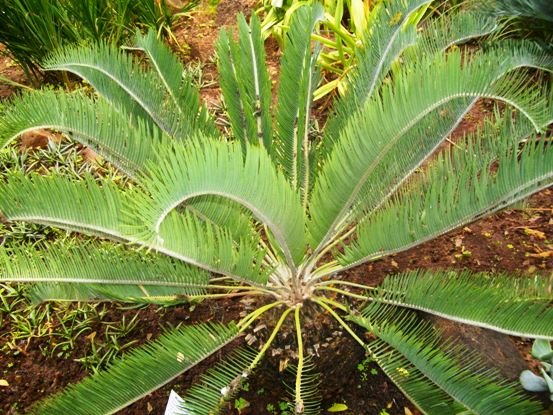Encephalartos lanatus

Author: Ivan Lätti
Photographer: Ivan Lätti
Encephalartos lanatus, commonly known as the Olifants River cycad, is a medium sized, usually single stemmed cycad (SA Tree List No. 5.2). It grows slowly to a height of about 1,5 m and the stem reaches a diameter of about 30 cm. Mature plants may sometimes produce suckers that grow around the main stem. This species resembles E. laevifolius, E. humilis and E. friderici-guilielmi.
The male cone is cylindrical and much narrower than the female one that is especially stout around the middle, tapering towards its ends. The cones are woolly when young, creamy yellow when mature. The seeds are yellow, fleshy and comparatively small, given the size of some other cycad seeds.
The species distribution is in the northeast of Gauteng and the west of Mpumalanga, the upper reaches of the Olifants River, a range restricted species.
The habitat is highveld grassland where it grows in sheltered, rocky valleys where the summers are moderately hot and the winters very cold and frosty. It is frost hardy and drought resistant. The habitat population is deemed vulnerable early in the twenty first century, mainly due to illegal collections and mining. The plant grows slowly and does not transplant easily. Apart from the generally strict legal requirements for acquiring and owning cycad plants, the risk of destroying a rare plant should always serve as a deterrent to all good citizens of the earth. Rather admire them where they grow in nature or in public gardens, planted by experts (Coates Palgrave, 2002; iNaturalist; www.plantzafrica.com; http://redlist.sanbi.org).

